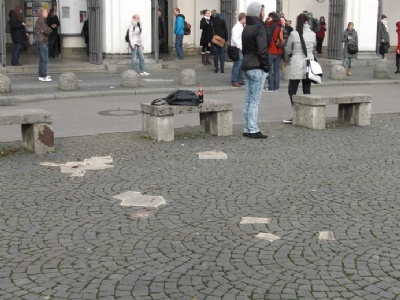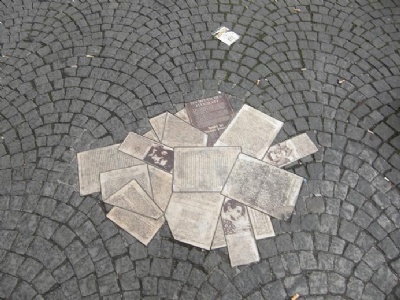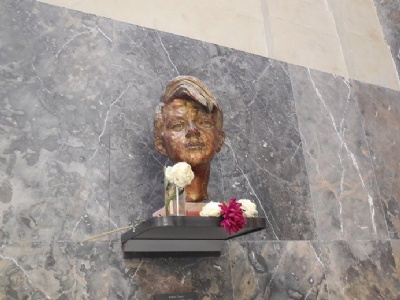München – LMU
In 1941, a number of students at the Ludwig Maximilian University (LMU) in Munich began to meet and discuss the situation in Germany and the danger of Nazism. Some students had served at the front and seen what war was about. Others felt that Nazism did not favor the development of the individual. Instead the individual was just a tool for the state to achieve its goal. Common to all of them, was that they felt that Nazism was driving Germany and individualism towards destruction.
The group had a nucleus of six members, siblings Hans and Sophie Scholl, Christoph Probst, Alexander Schmorell, Willi Graf and Kurt Huber. In addition to these, there were sympathizers in both Munich and other cities. All came from different backgrounds and several had been members of Nazi organizations, including the siblings Scholl. Probst, Schmorell and Graf had been at the front and witnessed war crimes. Probst was also a parent of young children. Kurt Huber was an elderly professor who worked at the University of Munich and contributed with life experience as a contrast to the others.
They were all aware that they had no real chance of bringing the regime down. Their opportunities lay in spreading flyers about, for example, war crimes committed at the front. In this way, they hoped to create a foundation that might eventually grow strong and undermine the regime. The group published its first flyer in June 1942 and addressed mainly other students and like-minded people. Three more flyers followed in June and July and all were signed with White rose. It is by this name they have been known in history, but the group itself didn’t call themselves anything. Two more flyers were spread that were not signed at all. It was when the sixth and final flyer was distributed by Hans and Sophie Scholl at the University of Munich (Ludwig Maximilian University) on February 18, 1943, that they were revealed by a janitor. They were taken Gestapo headquarters at Wittelsbacher Palast, interrogated and confessed their actions.
The other four members were arrested shortly and after four days the siblings Scholl and Christoph Probst were brought before the Nazi People’s Court and sentenced to death by beheading. The sentence was carried out on same day at Stadelheim Prison, Munich. Hans was 24 years old and Sophie 21. The second trial against Graf, Schmorell and Huber were also held by People’s Court, April 19. All were sentenced to death by beheading. Three more trials were held against suspected members of the group with different verdicts.
Current status: Preserved with museum (2010).
Address: Geschwister-Scholl-Platz, 80539 München.
Get there: Metro to Universität Station.
Follow up in books: Wilson, Kip: White Rose (2019).






The story of the White Rose has generally been about Hans and Sophie and, in particular, about Sophie. Around the world there are places named after Hans and Sophie. At the University of Munich there is a bust of Sophie in the entrance hall and the place outside the university bears the name Geschwister Scholl Platz. There is also a rather uninteresting museum about the White Rose at the university.
Sophie has undoubtedly become one of the world’s most famous female historical personalities, which has given her a major impact on the historization of the White Rose. Almost in a way that makes it possible to get the impression that she was the leader of the group. But there was no explicit leader within the group, and if it were, probably Sophie wasn’t the one who took charge. This has led to relatives of other members considering that their efforts within the group have been marginalized at the expense of Sophie (and Hans). Hans and Sophie’s role within the group should not be underestimated, but it should not be overestimated either. The truth is probably that everyone contributed in their own way what they felt could be helpful in achieving its goals.
Some say that Sophie had been defiant and stubborn when she spoke during the trial. Which made the hard-core Nazi judge, Roland Freisler, frustrated at her. Most likely this is incorrect, but that does not take away or diminish her contributions. But it has a meaning in our search for steadfast personalities who took a stand against Hitler and Nazism. In this case, Sophie met all the criteria, she was young, she was a woman, she was a student, and above all, she was German. Characteristics that make her ideal to highlight as a historical personality and opponent of Nazism. Under such conditions, it can be problematic to highlight others and thus risk shifting focus from Sophie, even though it would be more historically accurate.